


Books in series

Avengers
Ultron Unlimited
2000

Avengers (1963-1996) #1
1963

The Avengers
I am an Avenger, Vol. 1
2010

Avengers
Die ruhmreichen Rächer
2018

Avengers (1963-1996) #2
1963

Captain America
The Secret Story of Marvel's Star-Spangled Super Hero
1981

Captain America
Man Out of Time
2011
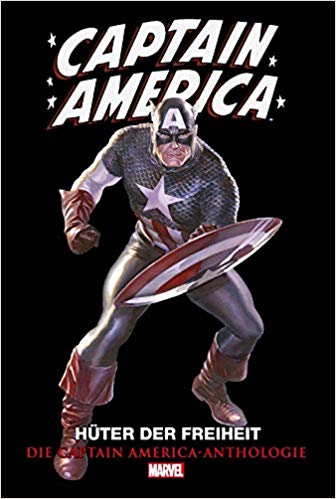
Captain America Anthologie
Hüter der Freiheit
2019

Avengers (1963-1996) #4
1964
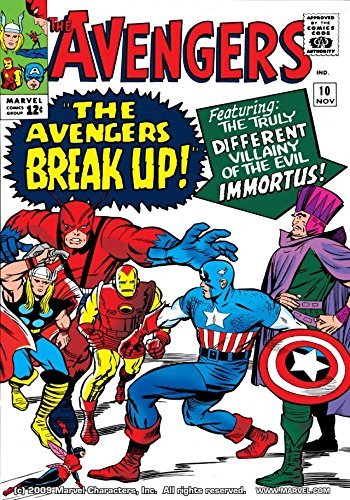
Avengers (1963-1996) #10
1964

Avengers (1963-1996) #16
1965

Marvel Masterworks
The X-Men, Vol. 5
2005
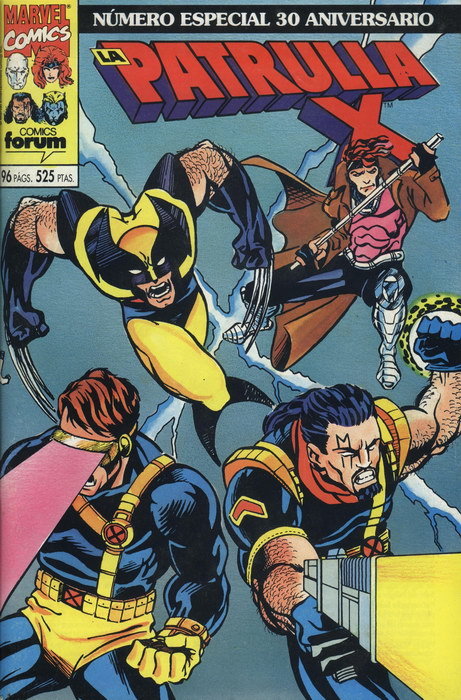
La Patrulla-X
Especial 30 aniversario
1993
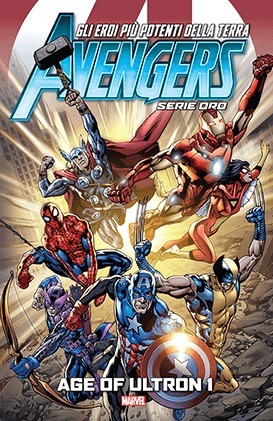
Avengers Serie Oro n. 1
Age of Ultron 1
2015

Avengers vs. Ultron
2015

Avengers (1963-1996) #56
1968
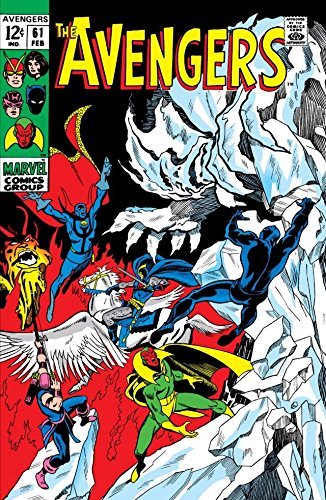
Avengers (1963-1996) #61
2014
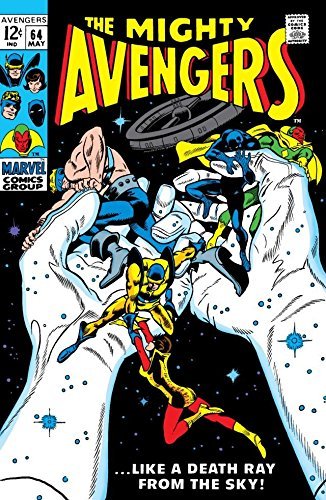
Avengers (1963-1996) #64
1969
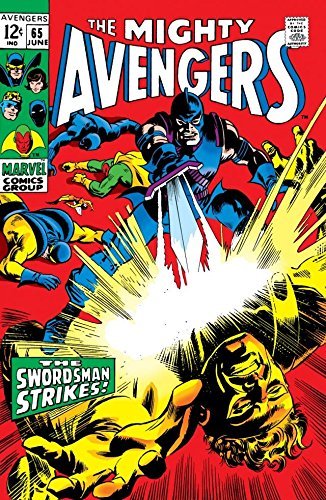
Avengers (1963-1996) #65
2014
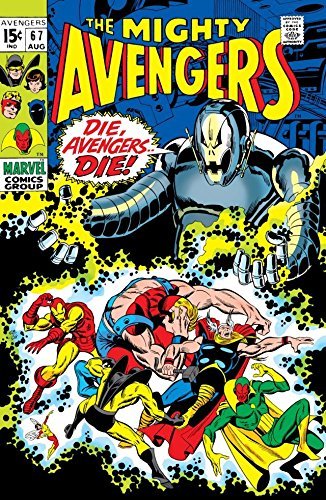
Avengers (1963-1996) #67
2014

Avengers (1963-1996) #68
2014
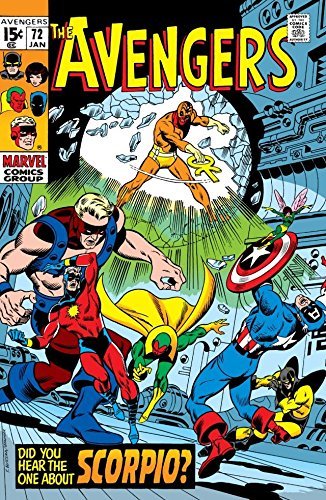
Avengers (1963-1996) #72
1970
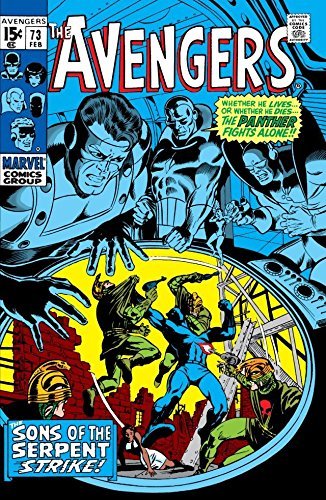
Avengers (1963-1996) #73
2014
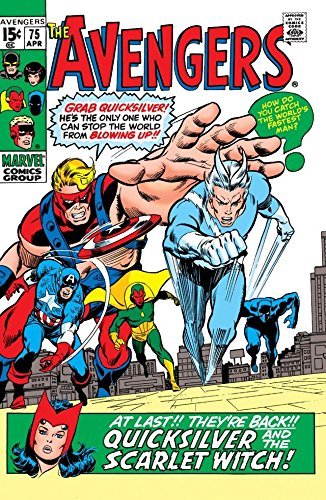
Avengers (1963-1996) #75
1970
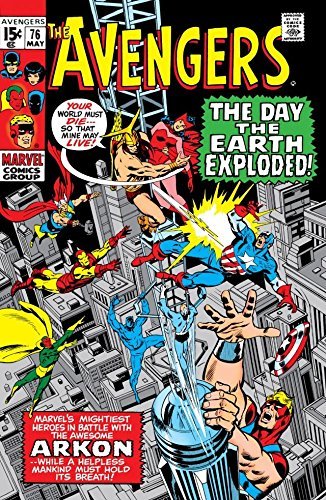
Avengers (1963-1996) #76
2014
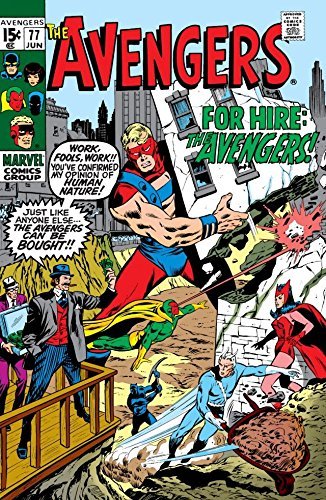
Avengers (1963-1996) #77
2014
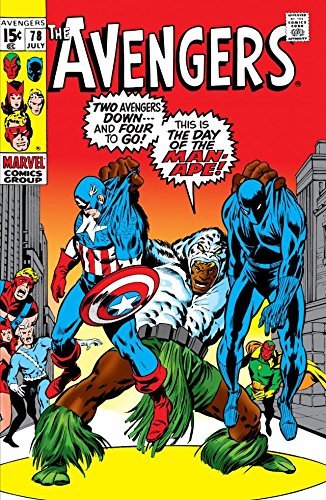
Avengers (1963-1996) #78
1970

A-Force, Vol. 1
Hypertime
2016
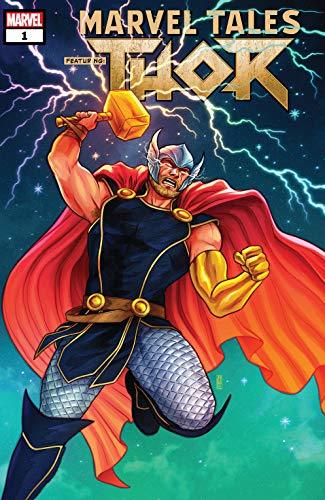
Marvel Tales
Thor #1
2019
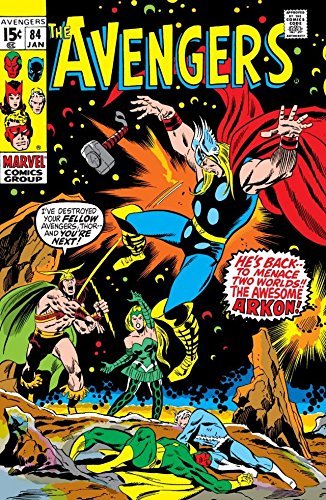
Avengers (1963-1996) #84
2014
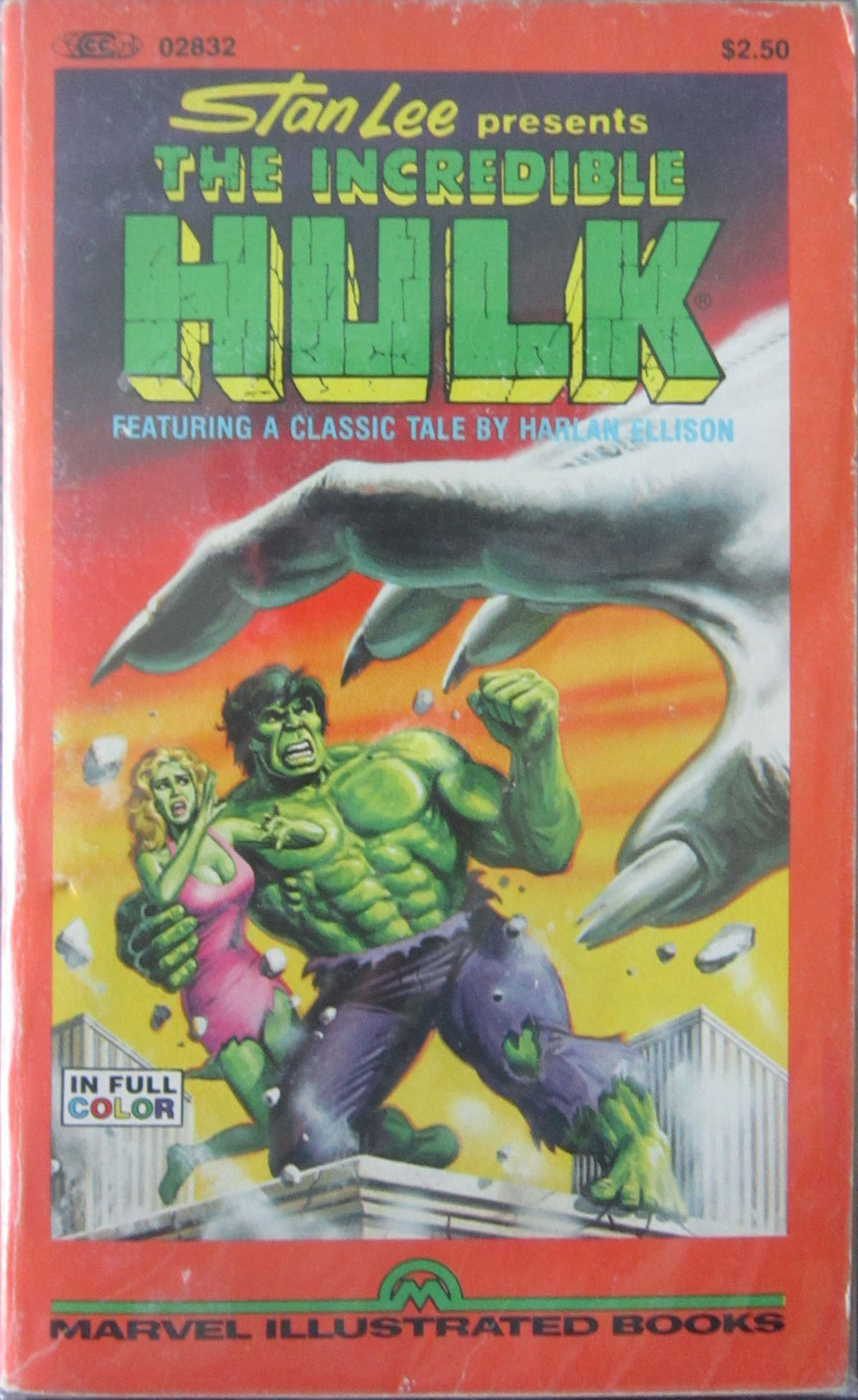
Stan Lee Presents
The Incredible Hulk
1982
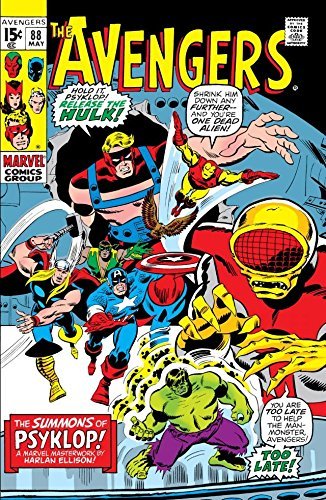
Avengers (1963-1996) #88
1971
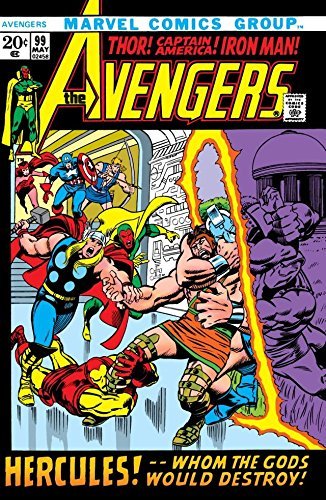
Avengers (1963-1996) #99
2014
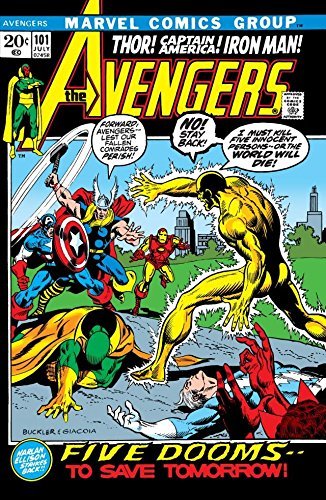
Avengers (1963-1996) #101
1972
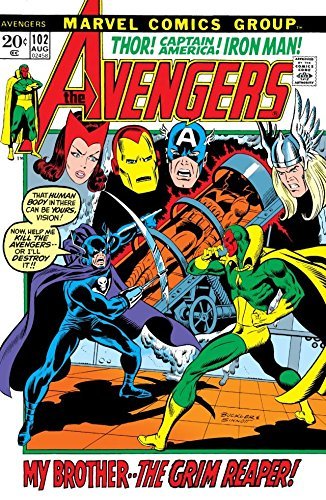
Avengers (1963-1996) #102
1972
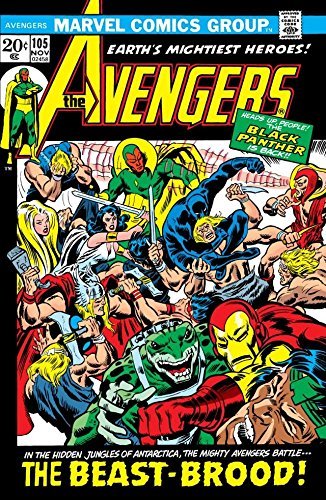
Avengers (1963-1996) #105
2014
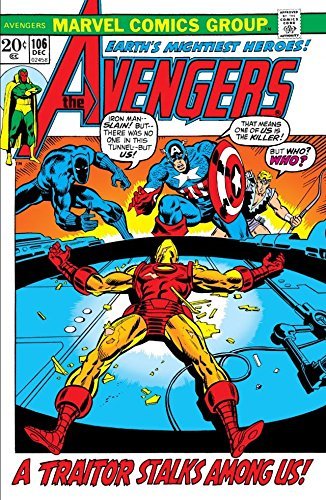
Avengers (1963-1996) #106
2014
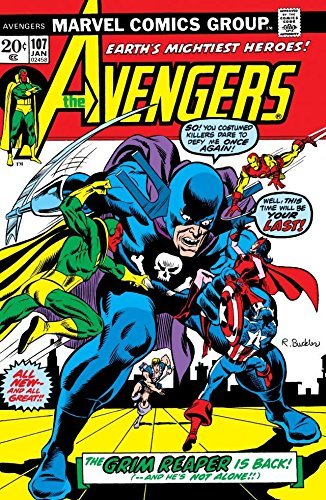
Avengers (1963-1996) #107
2014
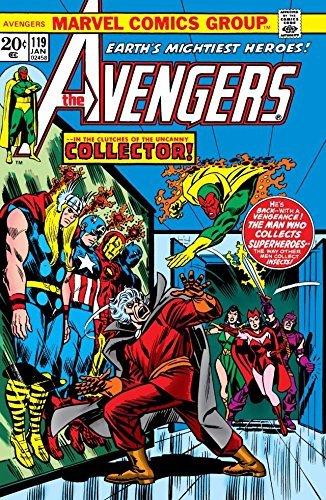
Avengers (1963-1996) #119
2014
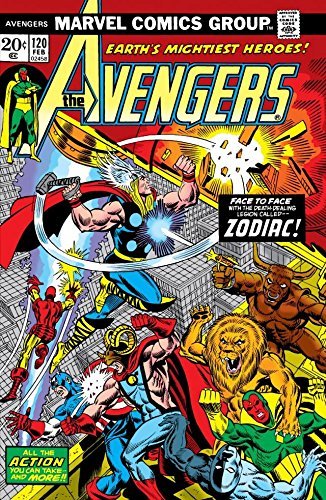
Avengers (1963-1996) #120
2014

Avengers Vs. Thanos
2013
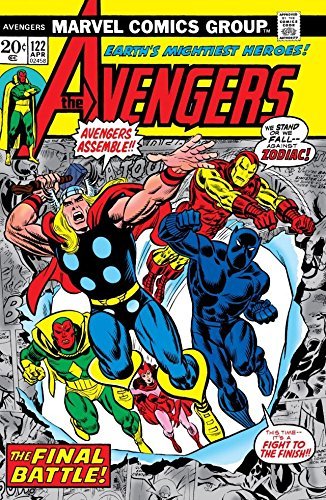
Avengers (1963-1996) #122
2014
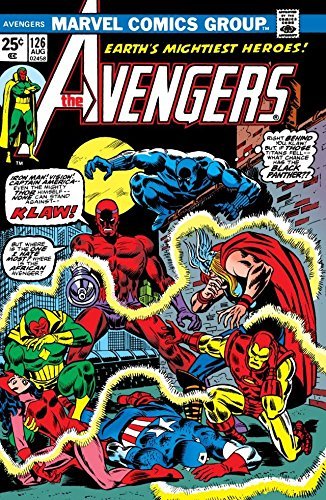
Avengers (1963-1996) #126
2014

Avengers (1963-1996) #127
2014

Avengers (1963-1996) #128
2014

Avengers (1963-1996) #129
2014

Avengers (1963-1996) #130
1974

Avengers (1963-1996) #131
2014

Avengers (1963-1996) #132
2014

Avengers (1963-1996) #133
2014

Avengers (1963-1996) #134
2014

Avengers (1963-1996) #135
2014

Avengers (1963-1996) #136
2014

Avengers (1963-1996) #137
2014

Avengers (1963-1996) #138
2014

Avengers (1963-1996) #139
2014

Avengers (1963-1996) #140
2014
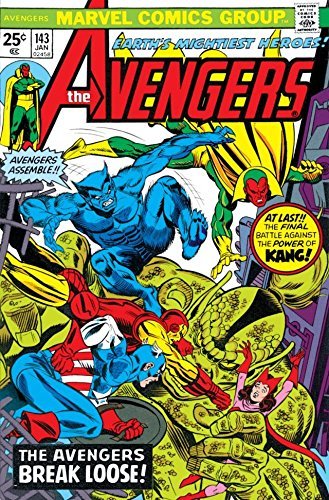
Avengers (1963-1996) #143
1976
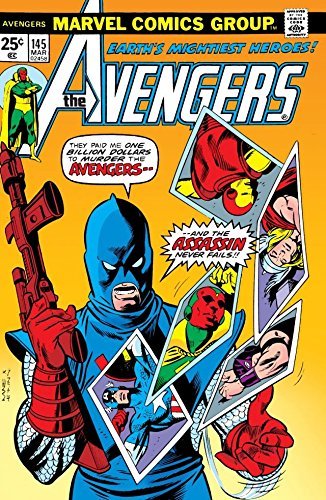
Avengers (1963-1996) #145
2014
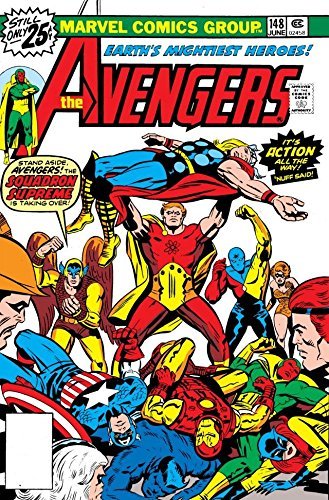
Avengers (1963-1996) #148
1976
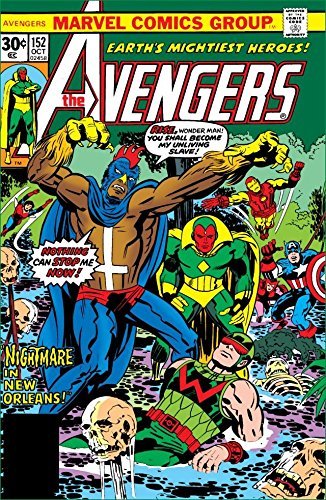
Avengers (1963-1996) #152
1976
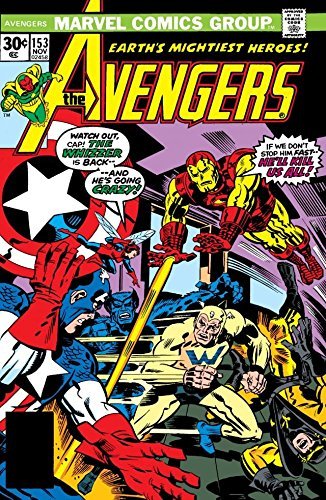
Avengers (1963-1996) #153
2014
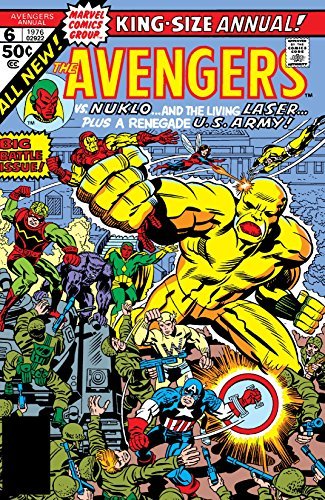
Avengers (1963-1996) Annual #6
2015
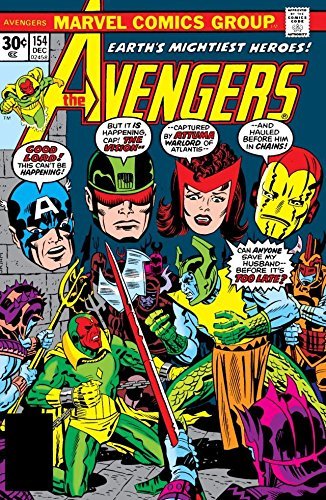
Avengers (1963-1996) #154
1976
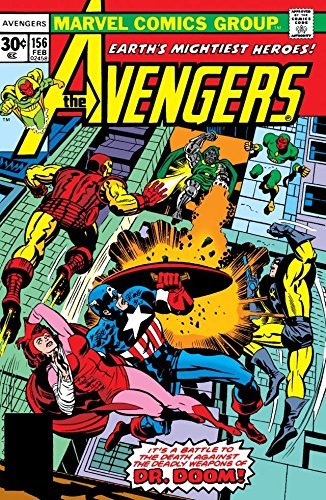
Avengers (1963-1996) #156
2014
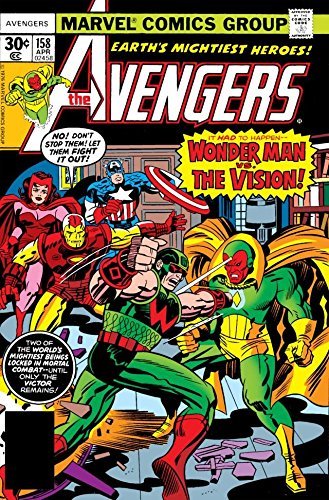
Avengers (1963-1996) #158
2013

Marvel Masterworks
The Champions, Vol. 1
2016
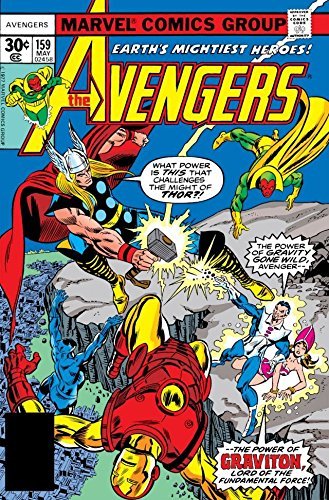
Avengers (1963-1996) #159
1977
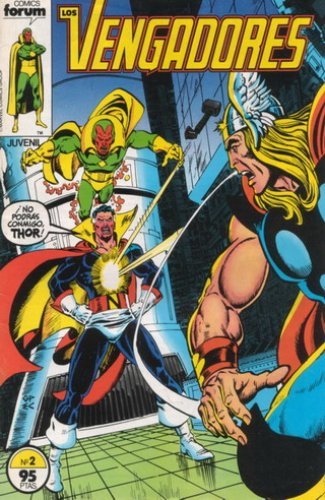
Los Vengadores, nº2
1983
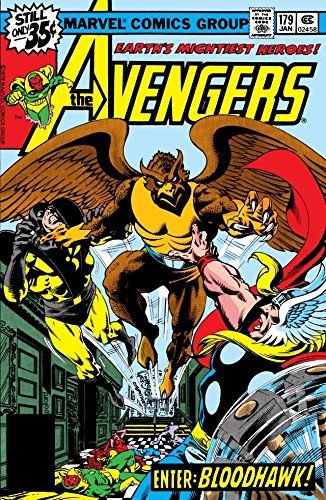
Avengers (1963-1996) #179
1979
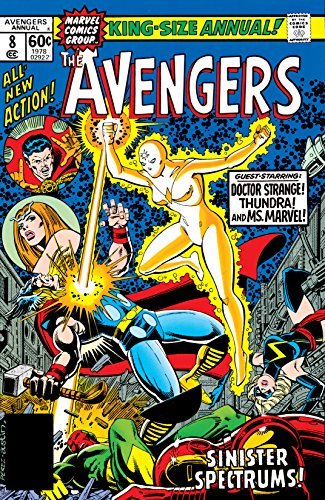
Avengers (1963-1996) Annual #8
1978

Avengers
Hawkeye
1988
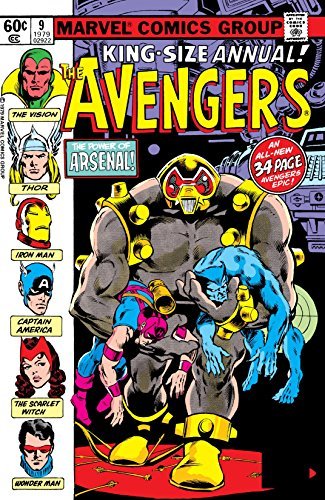
Avengers (1963-1996) Annual #9
1979
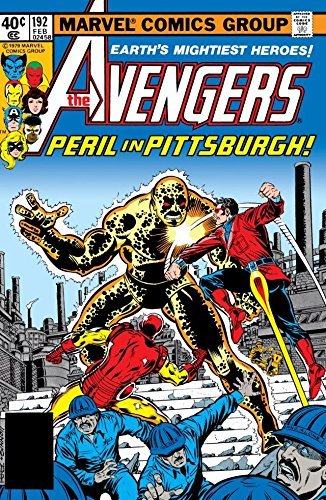
Avengers (1963-1996) #192
2014
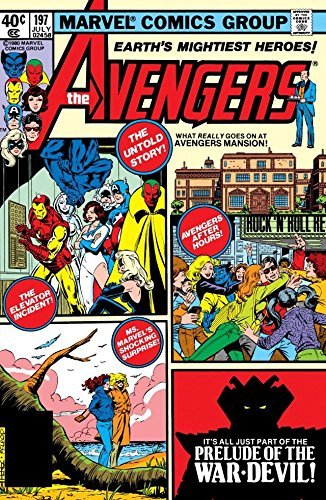
Avengers (1963-1996) #197
2014
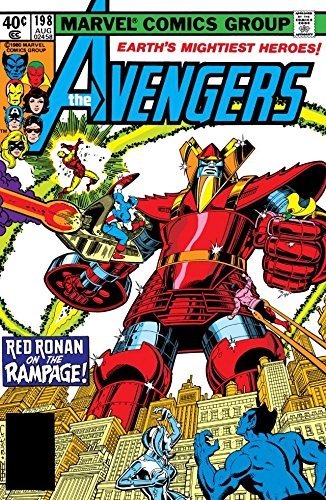
Avengers (1963-1996) #198
1992
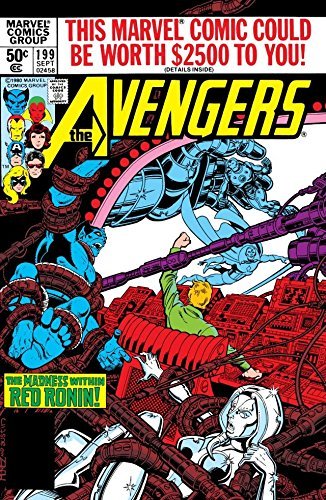
Avengers (1963-1996) #199
1980
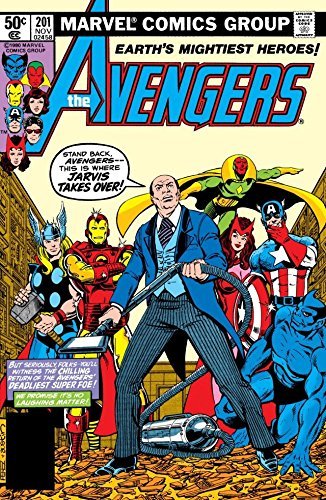
Avengers (1963-1996) #201
1980
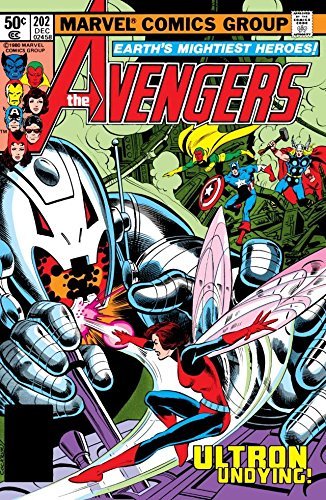
Avengers (1963-1996) #202
2014
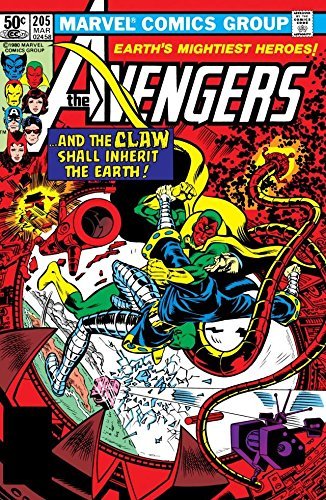
Avengers (1963-1996) #205
2014

Ghost Rider Team-up
2007
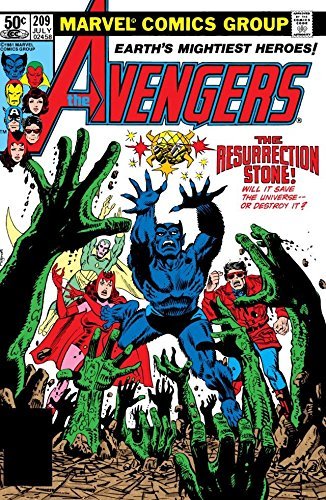
Avengers (1963-1996) #209
2014
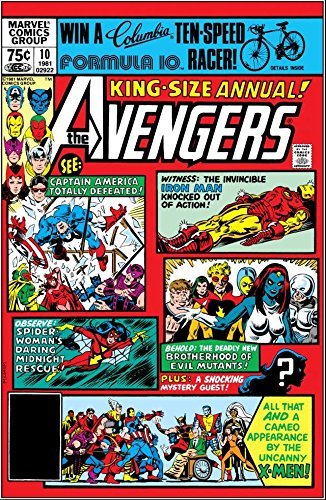
Avengers (1963-1996) Annual #10
1981
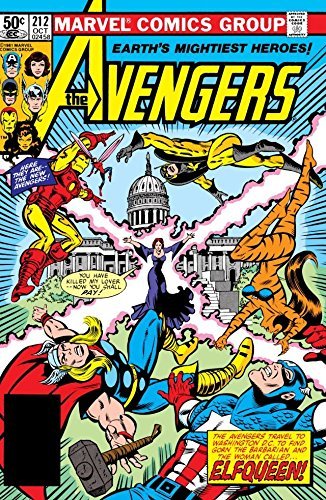
Avengers (1963-1996) #212
2014
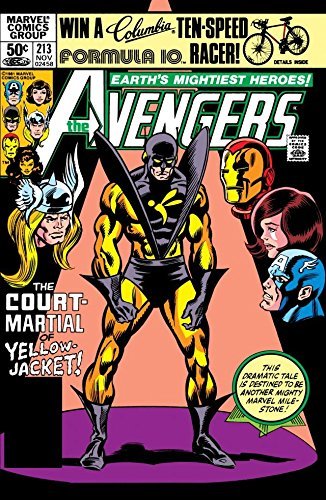
Avengers (1963-1996) #213
2014
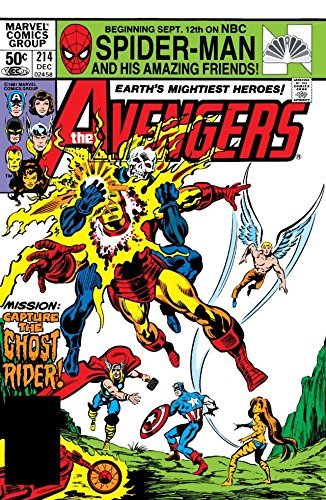
Avengers (1963-1996) #214
2014
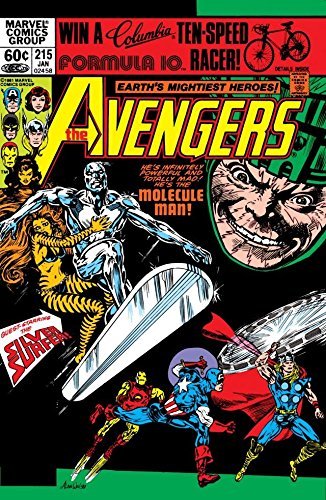
Avengers (1963-1996) #215
2014
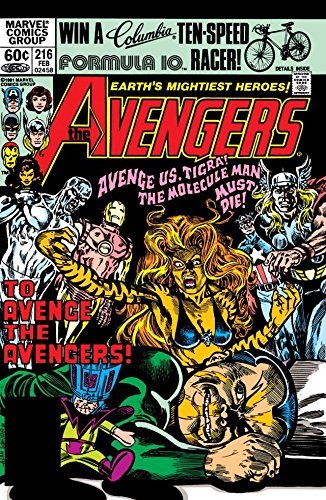
Avengers (1963-1996) #216
2014
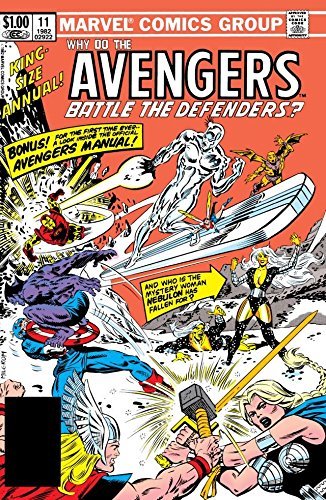
Avengers (1963-1996) Annual #11
1967
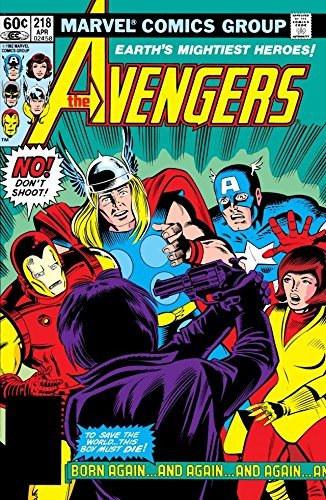
Avengers (1963-1996) #218
2014
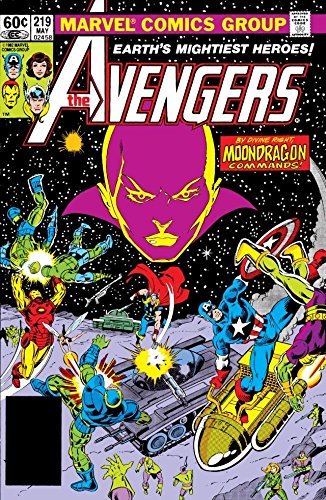
Avengers (1963-1996) #219
1980
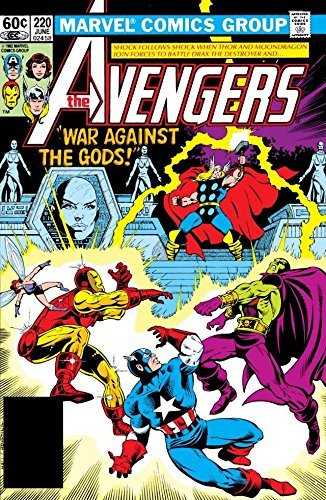
Avengers (1963-1996) #220
1980
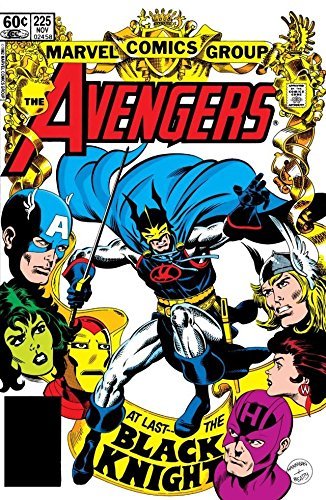
Avengers (1963-1996) #225
1982
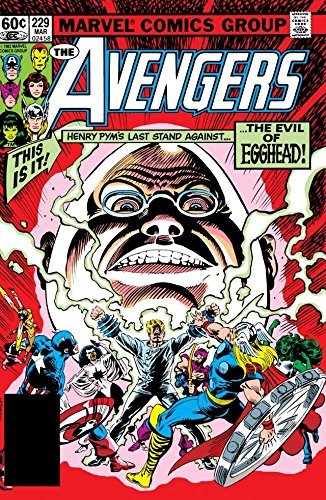
Avengers (1963-1996) #229
1982
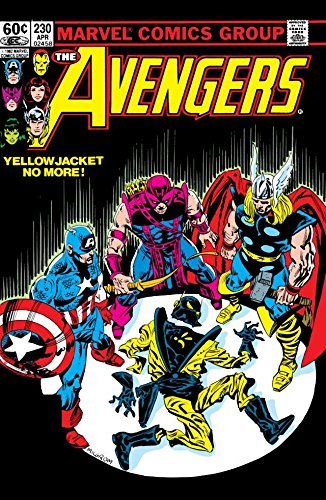
Avengers (1963-1996) #230
1983
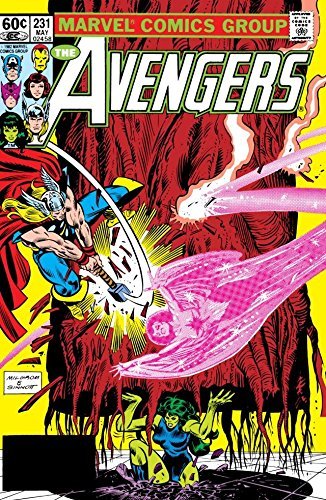
Avengers (1963-1996) #231
1980
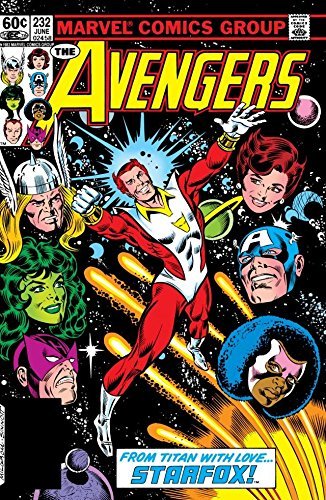
Avengers (1963-1996) #232
1983
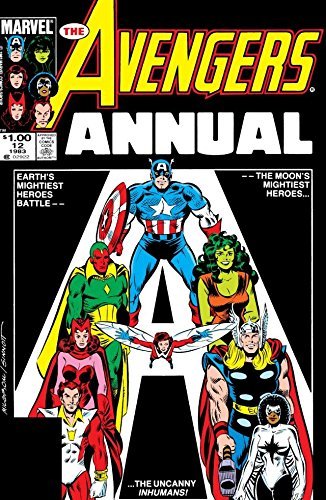
Avengers (1963-1996) Annual #12
1967
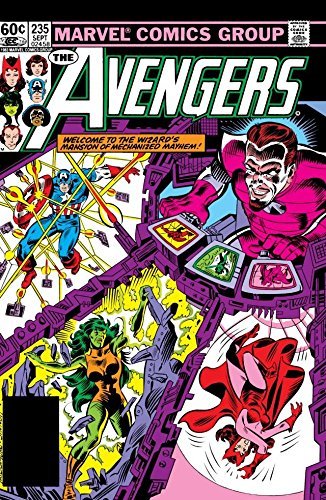
Avengers (1963-1996) #235
2014
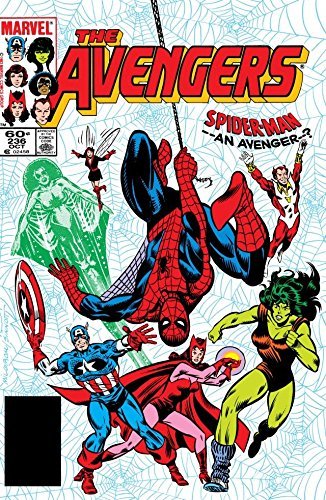
Avengers (1963-1996) #236
1983
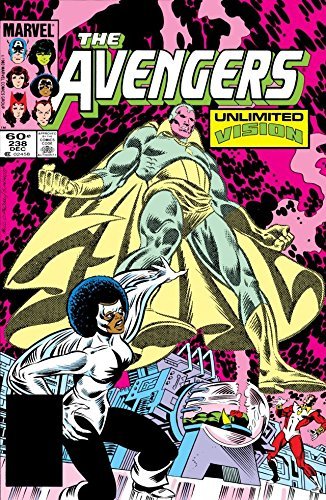
Avengers (1963-1996) #238
1983
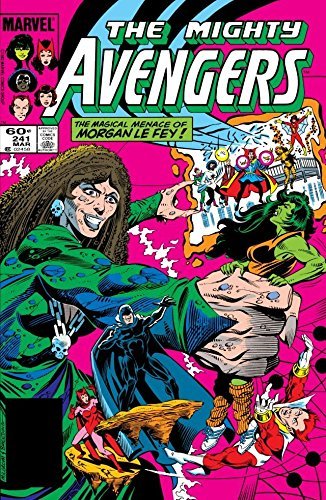
Avengers (1963-1996) #241
2014
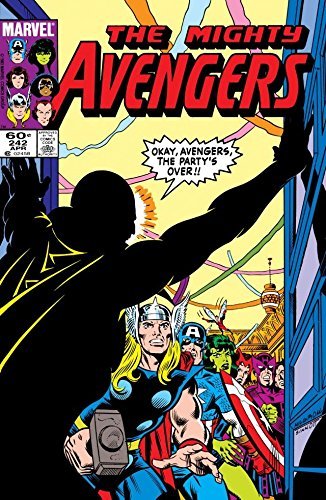
Avengers (1963-1996) #242
1984
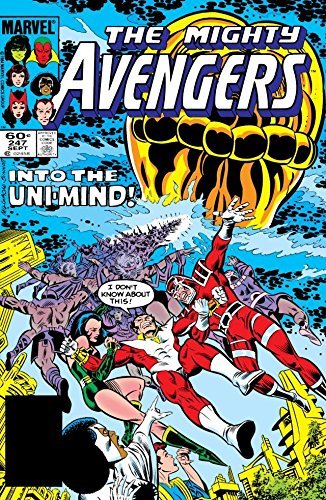
Avengers (1963-1996) #247
2014
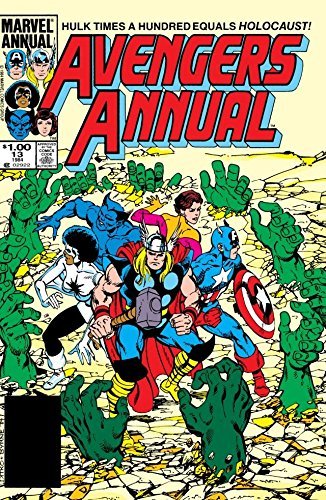
Avengers (1963-1996) Annual #13
1967

Fantastic Four Visionaries
John Byrne, Vol. 7
2007
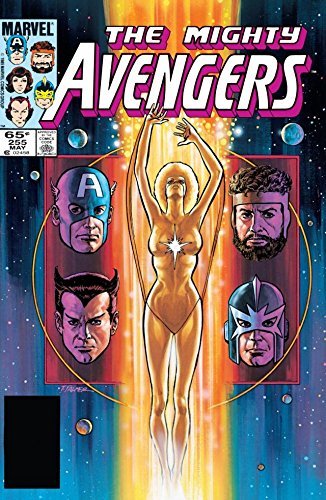
Avengers (1963-1996) #255
2014
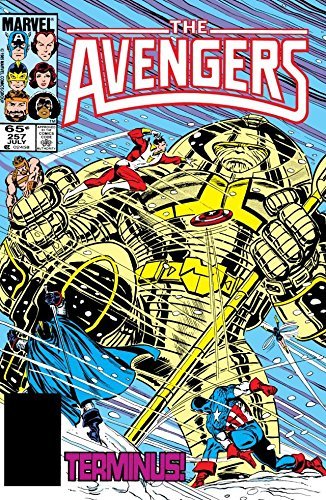
Avengers (1963-1996) #257
1980
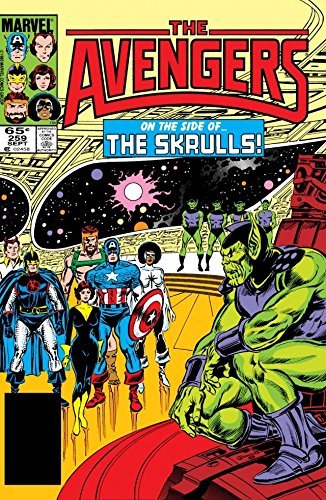
Avengers (1963-1996) #259
2014
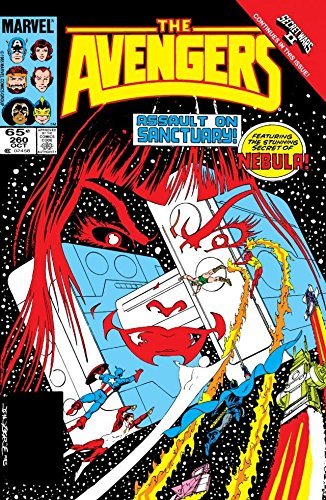
Avengers (1963-1996) #260
1985
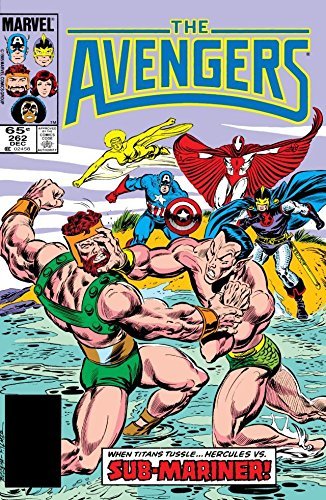
Avengers (1963-1996) #262
1980
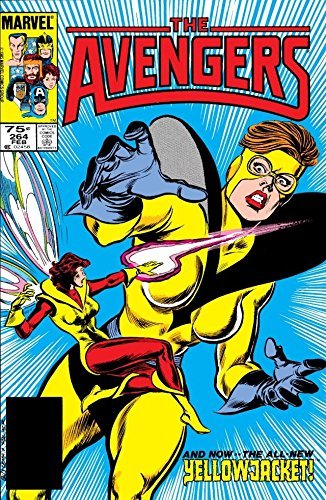
Avengers (1963-1996) #264
1986
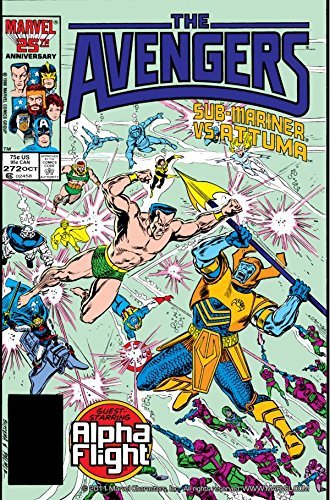
Avengers (1963-1996) #272
1986
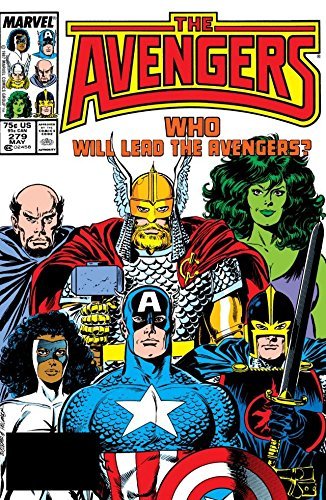
Avengers (1963-1996) #279
2014
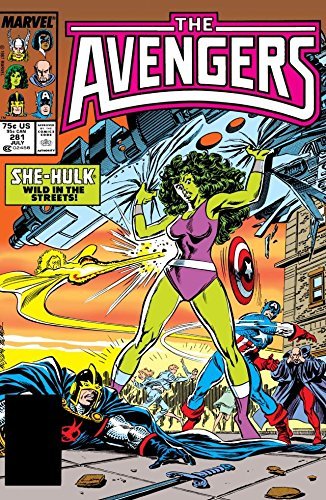
Avengers (1963-1996) #281
1987
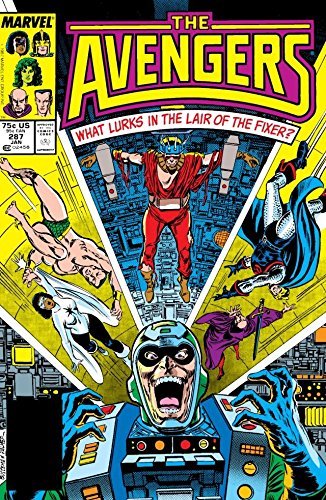
Avengers (1963-1996) #287
2014
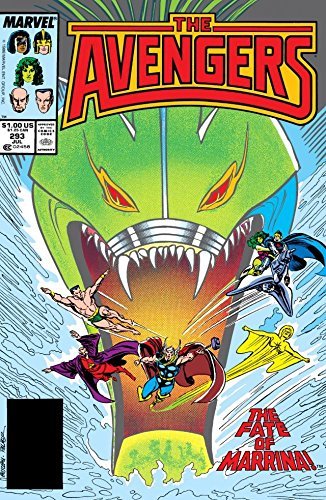
Avengers (1963-1996) #293
2014
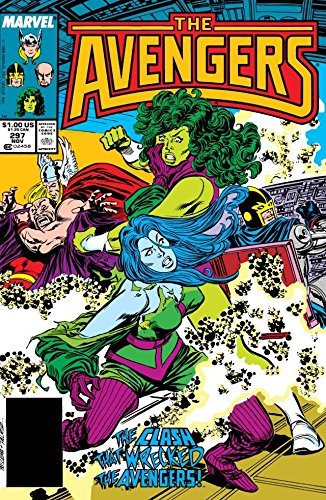
Avengers (1963-1996) #297
2014
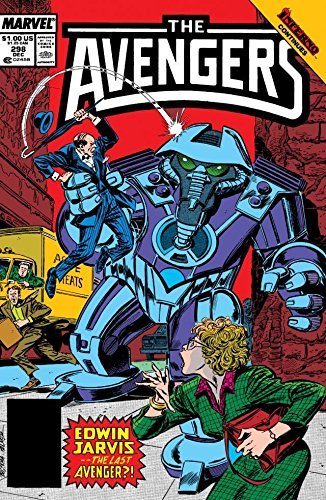
Avengers (1963-1996) #298
1988
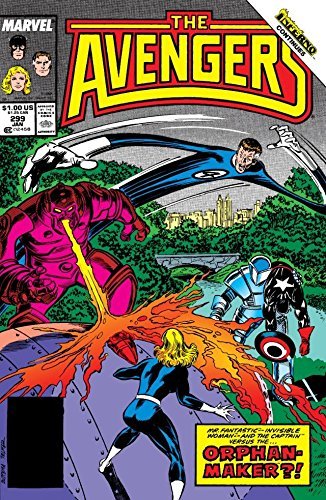
Avengers (1963-1996) #299
2014
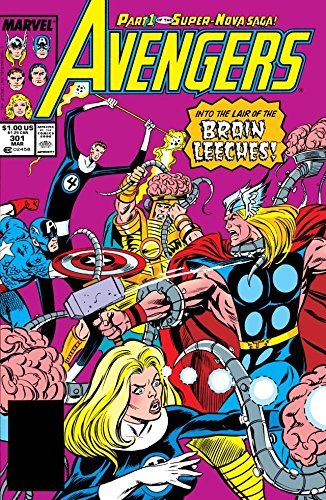
Avengers (1963-1996) #301
2014
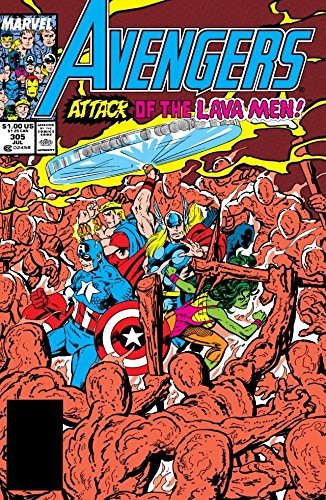
Avengers (1963-1996) #305
1989
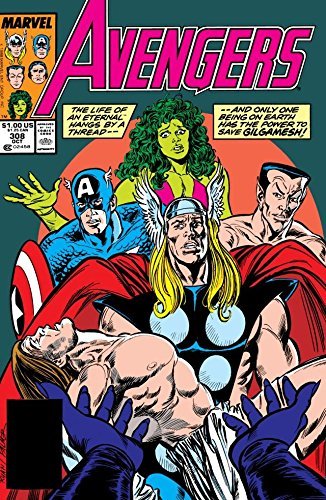
Avengers (1963-1996) #308
1980

Avengers (1963-1996) #310
1989
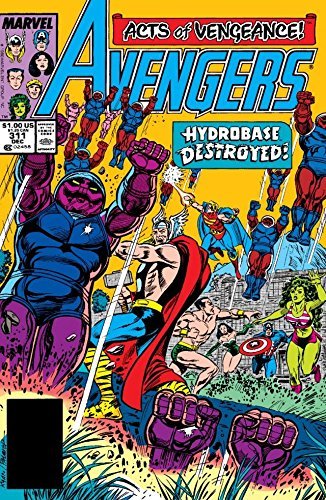
Avengers (1963-1996) #311
1989
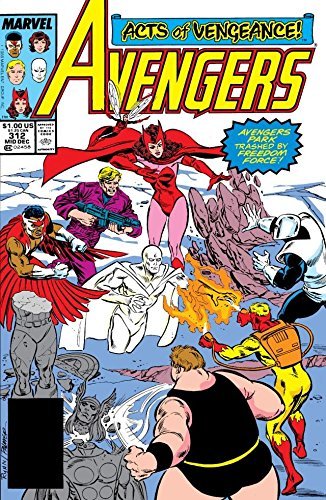
Avengers (1963-1996) #312
1989
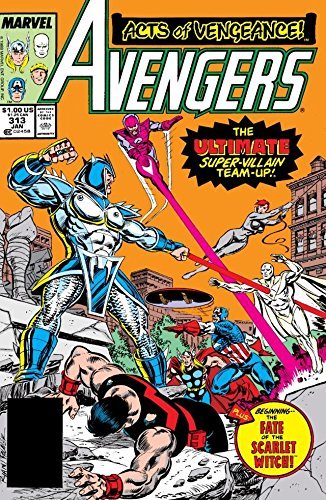
Avengers (1963-1996) #313
1990

Avengers (1963-1996) #316
1990
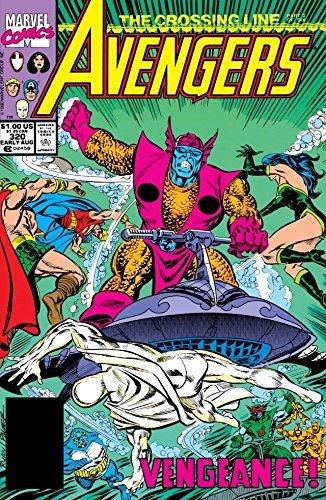
Avengers (1963-1996) #320
2014
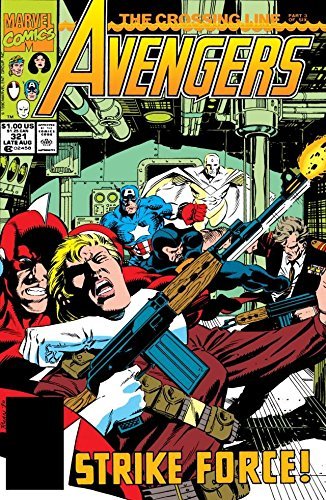
Avengers (1963-1996) #321
2014
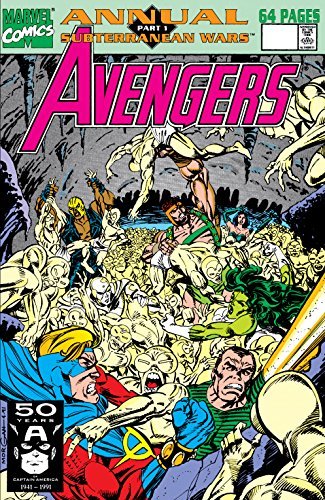
Avengers (1963-1996) Annual #20
2018
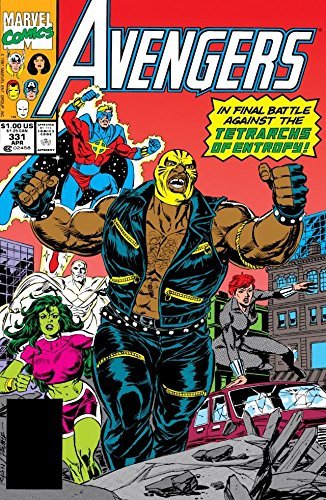
Avengers (1963-1996) #331
2014
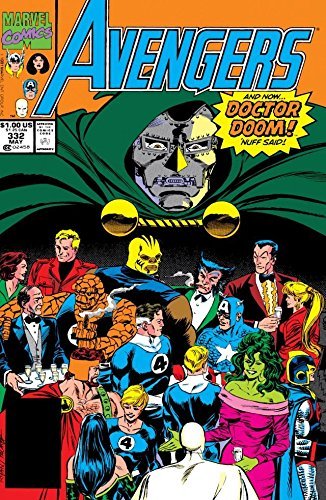
Avengers (1963-1996) #332
2014
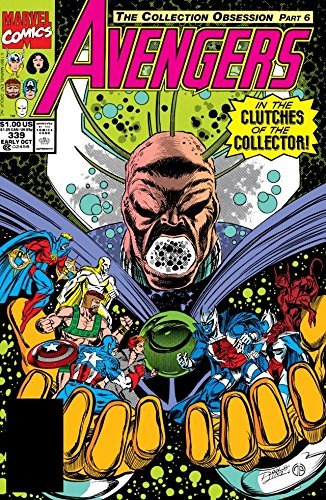
Avengers (1963-1996) #339
2014
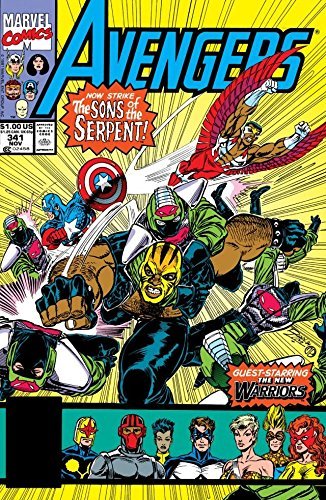
Avengers (1963-1996) #341
2014

Avengers (1963-1996) #344
2014
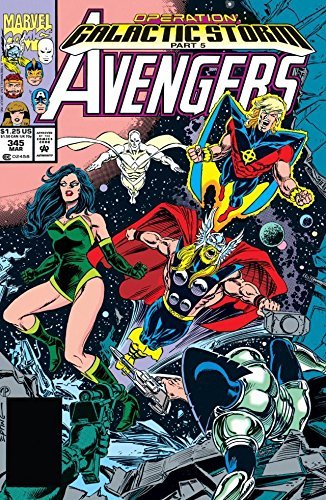
Avengers (1963-1996) #345
2014
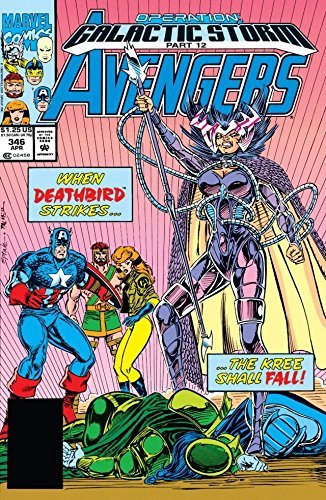
Avengers (1963-1996) #346
2014
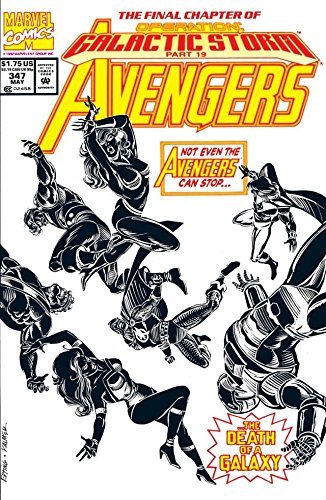
Avengers (1963-1996) #347
2014
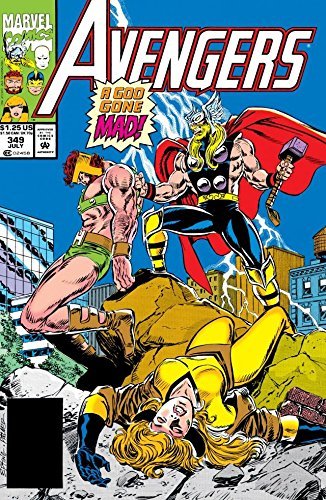
Avengers (1963-1996) #349
2014
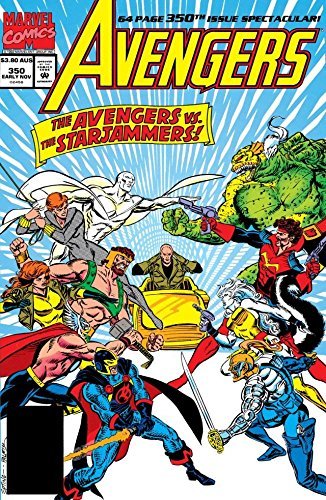
Avengers (1963-1996) #350
1992
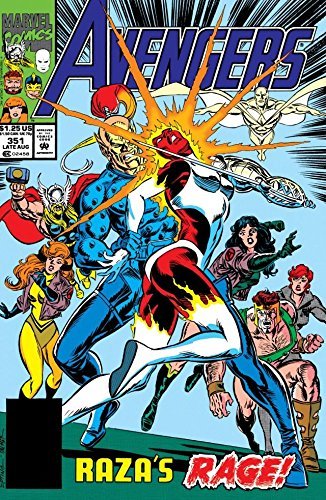
Avengers (1963-1996) #351
1992
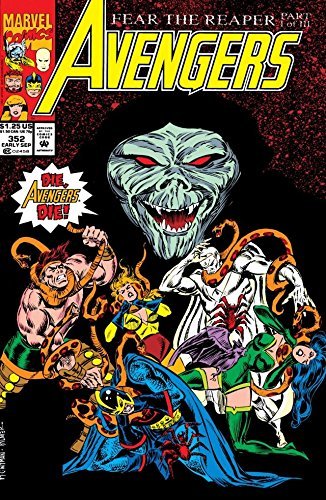
Avengers (1963-1996) #352
2014
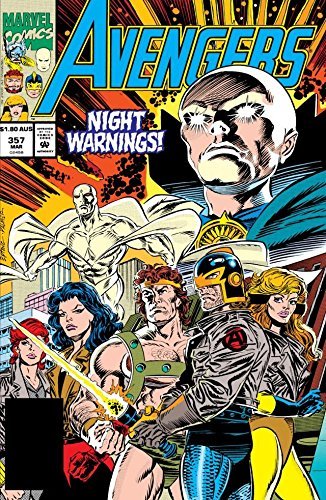
Avengers (1963-1996) #357
2014
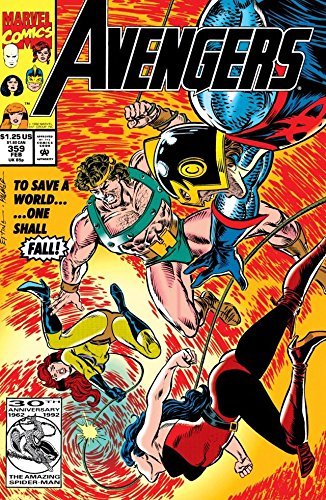
Avengers (1963-1996) #359
2014
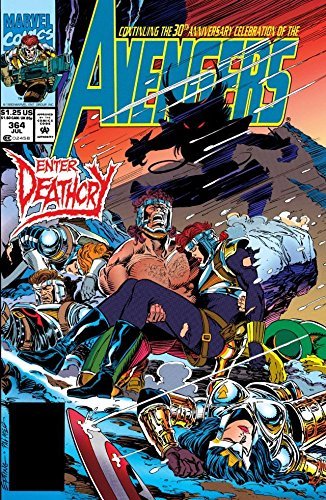
Avengers (1963-1996) #364
2014
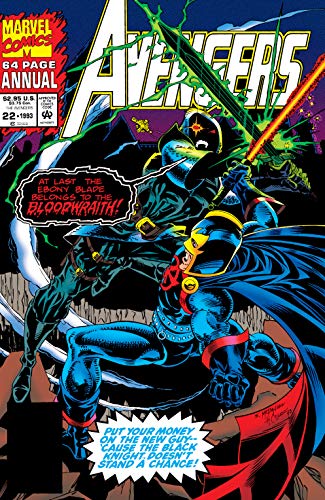
Avengers (1963-1996) Annual #22
2019
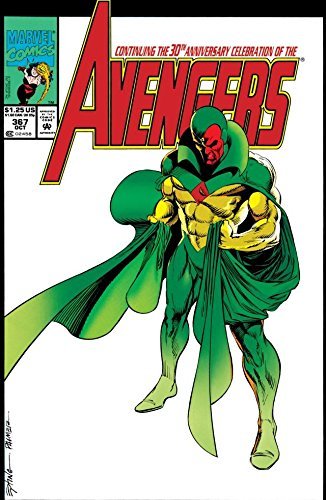
Avengers (1963-1996) #367
1993
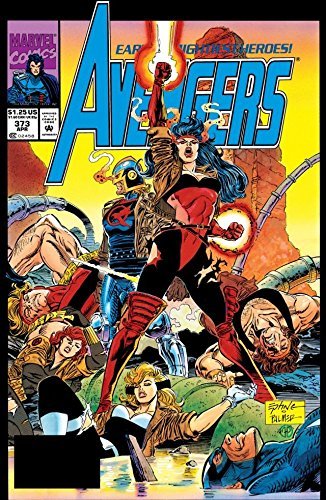
Avengers (1963-1996) #373
2014
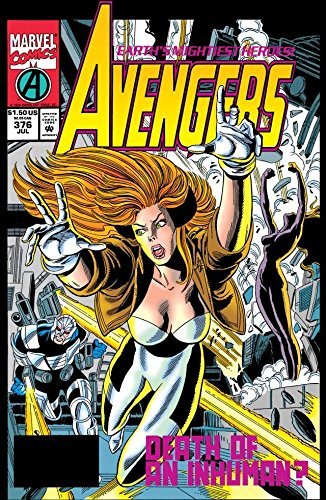
Avengers (1963-1996) #376
2014
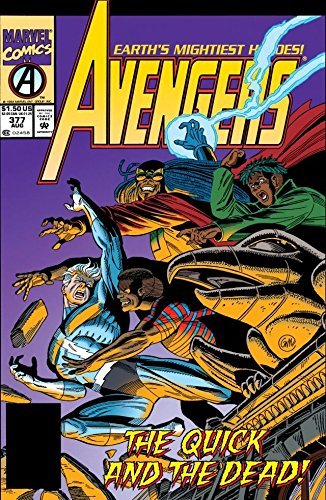
Avengers (1963-1996) #377
2014
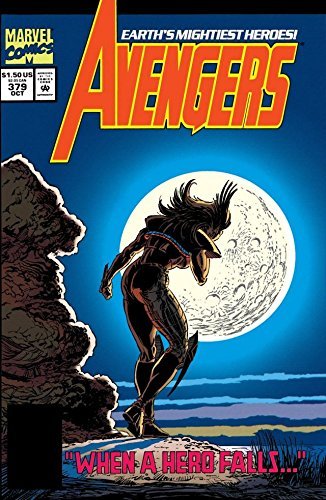
Avengers (1963-1996) #379
2014

Fantastic Four by Waid & Wieringo
Ultimate Collection, Book 1
2011

X-Men
Onslaught - The Complete Epic, Book 3
2008
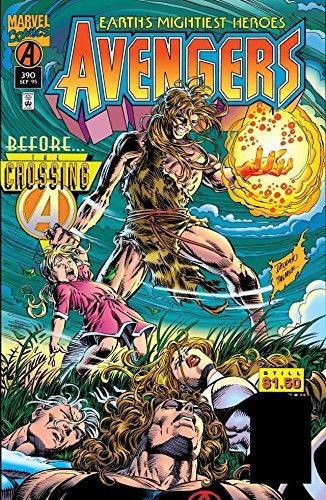
Avengers (1963-1996) #390
1995
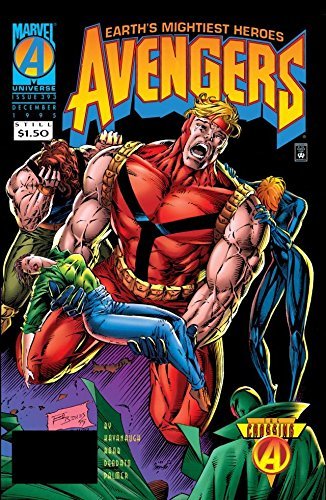
Avengers (1963-1996) #393
2014
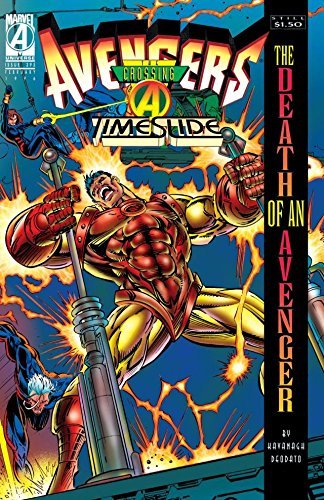
Avengers (1963-1996) #395
2014
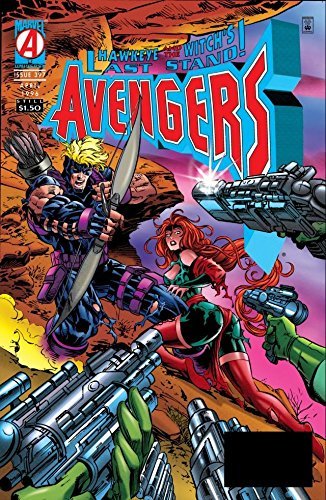
Avengers (1963-1996) #397
1996
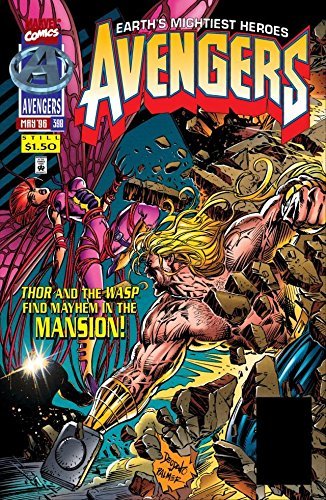
Avengers (1963-1996) #398
2014

Essential Warlock, Vol. 1
1977

Warlock by Jim Starlin
The Complete Collection
2009

Thanos
The Final Threat #1
2012
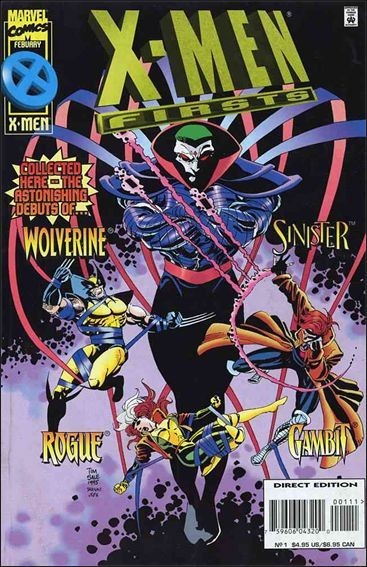
X-Men Firsts
1996

X-Men Famous Firsts
1995

Marvel Masterworks
The Uncanny X-Men, Vol. 7
2011

Avengers
Citizen Kang
2011

Marvel Masterworks
The Avengers, Vol. 1
1990

Essential Avengers, Vol. 1
1966

Marvel Masterworks
The Avengers, Vol. 4
2012

Marvel Masterworks
The Avengers, Vol. 5
2005

Marvel Masterworks
The Avengers, Vol. 6
2006

Avengers
Kang - Time And Time Again
2005

Occupy Avengers, Vol. 1
Taking Back Justice
2017

The Avengers
The Kree-Skrull War
1985

Avengers/Defenders War
1973

The Avengers
The Serpent Crown
1976

Avengers Epic Collection, Vol. 9
The Final Threat
2013

Marvel Masterworks
The Avengers, Vol. 17
2017

Marvel Masterworks
The Avengers, Vol. 18
2018

Avengers
Nights of Wundagore
1979

Ant-Man
Scott Lang
2015

Avengers Epic Collection, Vol. 16
Under Siege
2016

Avengers
Under Siege
1987

Avengers/X-men
Bloodties
1995

X-Men/Avengers
Onslaught Omnibus
2015

The Uncanny X-Men Omnibus, Vol. 2
1982
Authors


Jason Pearson is an American comic book writer/artist, known for his work on books such as Legion of Super-Heroes, The Dragon: Blood & Guts, Global Frequency, and his own creator-owned series, Body Bags. Pearson is also one of the original members of the Atlanta, Georgia-based Gaijin Studios, and has participated in several Gaijin Studios-related projects.

Tony Isabella is an American comic book writer, editor, artist and critic, known as the creator and writer of Marvel Comics' Black Goliath; DC Comics' first major African-American superhero, Black Lightning; and as a columnist and critic for the Comics Buyer's Guide. Contents

Joseph "Jeph" Loeb III is an Emmy and WGA nominated American film and television writer, producer and award-winning comic book writer. Loeb was a Co-Executive Producer on the NBC hit show Heroes, and formerly a producer/writer on the TV series Smallville and Lost. A four-time Eisner Award winner and five-time Wizard Fan Awards winner (see below), Loeb's comic book career includes work on many major characters, including Spider-Man, Batman, Superman, Hulk, Captain America, Cable, Iron Man, Daredevil, Supergirl, the Avengers, and Buffy the Vampire Slayer, much of which he has produced in collaboration with artist Tim Sale, who provides the comic art seen on Heroes.

Librarian note: There is more than one author in the GoodReads database with this name John Lindley Byrne is a British-born Canadian-American author and artist of comic books. Since the mid-1970s, Byrne has worked on nearly every major American superhero. Byrne's better-known work has been on Marvel Comics' X-Men and Fantastic Four and the 1986 relaunch of DC Comics’ Superman franchise. Coming into the comics profession exclusively as a penciler, Byrne began co-plotting the X-Men comics during his tenure on them, and launched his writing career in earnest with Fantastic Four (where he also started inking his own pencils). During the 1990s he produced a number of creator-owned works, including Next Men and Danger Unlimited. He also wrote the first issues of Mike Mignola's Hellboy series and produced a number of Star Trek comics for IDW Publishing.

Len Wein was an American comic book writer and editor best known for co-creating DC Comics' Swamp Thing and Marvel Comics' Wolverine, and for helping revive the Marvel superhero team the X-Men (including the co-creation of Nightcrawler, Storm, and Colossus). Additionally, he was the editor for writer Alan Moore and illustrator Dave Gibbons' influential DC miniseries Watchmen. Wein was inducted into the Will Eisner Comic Book Hall of Fame in 2008.

Neal Adams is an American comic book and commercial artist known for helping to create some of the definitive modern imagery of the DC Comics characters Superman, Batman, and Green Arrow; as the co-founder of the graphic design studio Continuity Associates; and as a creators-rights advocate who helped secure a pension and recognition for Superman creators Jerry Siegel and Joe Shuster. Adams was inducted into the Eisner Award's Will Eisner Comic Book Hall of Fame in 1998, and the Harvey Awards' Jack Kirby Hall of Fame in 1999. Librarian Note: There is more than one author in the Goodreads database with this name.



Larry Hama is an American writer, artist, actor and musician who has worked in the fields of entertainment and publishing since the 1960s. During the 1970s, he was seen in minor roles on the TV shows M*A*S*H and Saturday Night Live, and appeared on Broadway in two roles in the original 1976 production of Stephen Sondheim's Pacific Overtures. He is best known to American comic book readers as a writer and editor for Marvel Comics, where he wrote the licensed comic book series G.I. Joe, A Real American Hero, based on the Hasbro action figures. He has also written for the series Wolverine, Nth Man: the Ultimate Ninja, and Elektra. He created the character Bucky O'Hare, which was developed into a comic book, a toy line and television cartoon.

For the Karate Kid actor, click here: Ralph Macchio Ralph Macchio is an American comic book editor and writer, who has held many positions at Marvel Comics, including executive editor. Macchio is commonly associated with Daredevil, the Spider-Man line of comics and the popular Ultimate Marvel line. In Macchio's words, he "made probably the longest run on Daredevil of anyone." Macchio is not related to the actor Ralph Macchio, but is nicknamed "Karate Kid" after that actor's famous role.

Steve Gerber graduated from the University of Missouri with a degree in communications and took a job in advertising. To keep himself sane, he wrote bizarre short stories such as "Elves Against Hitler," "Conversion in a Terminal Subway," and "...And the Birds Hummed Dirges!" He noticed acquaintance Roy Thomas working at Marvel, and Thomas sent him Marvel's standard writing test, dialoguing Daredevil art. He was soon made a regular on Daredevil and Sub-Mariner, and the newly created Man-Thing, the latter of which pegged him as having a strong personal style—intellectual, introspective, and literary. In one issue, he introduced an anthropomorphic duck into a horror fantasy, because he wanted something weird and incongruous, and Thomas made the character, named for Gerber's childhood friend Howard, fall to his apparent death in the following issue. Fans were outraged, and the character was revived in a new and deeply personal series. Gerber said in interview that the joke of Howard the Duck is that "there is no joke." The series was existential and dealt with the necessities of life, such as finding employment to pay the rent. Such unusual fare for comicbooks also informed his writing on The Defenders. Other works included Morbius, the Lving Vampire, The Son of Satan, Tales of the Zombie, The Living Mummy, Marvel Two-in-One, Guardians of the Galaxy, Shanna the She-Devil, and Crazy Magazine for Marvel, and Mister Miracle, Metal Men, The Phantom Zone , and The Immortal Doctor Fate for DC. Gerber eventually lost a lawsuit for control of Howard the Duck when he was defending artist Gene Colan's claim of delayed paychecks for the series, which was less important to him personally because he had a staff job and Colan did not. He left comics for animation in the early 1980s, working mainly with Ruby-Spears, creating Thundarr the Barbarian with Alex Toth and Jack Kirby and episodes of The Puppy's Further Adventures, and Marvel Productions, where he was story editor on multiple Marvel series including Dungeons & Dragons, G.I. Joe, and The Transformers. He continued to dabble in comics, mainly for Eclipse, including the graphic novel Stewart the Rat, the two-part horror story "Role Model: Caring, Sharing, and Helping Others," and the seven-issue Destroyer Duck with Jack Kirby, which began as a fundraiser for Gerber's lawsuit. In the early 1990s, he returned to Marvel with Foolkiller, a ten-issue limited series featuring a new version of a villain he had used in The Man-Thing and Omega the Unknown, who communicated with a previous version of the character through internet bulletin boards. An early internet adopter himself, he wrote two chapters of BBSs for Dummies with Beth Woods Slick, with whom he also wrote the Star Trek: The Next Generation episode, "Contagion." During this period, he also wrote The Sensational She-Hulk and Cloak and Dagger for Marvel, Cybernary and WildC.A.T.s for Image, and Sludge and Exiles for the writer-driven Malibu Ultraverse, and Nevada for DC's mature readers Vertigo line. In 2002, he returned to the Howard the Duck character for Marvel's mature readers MAX line, and for DC created Hard Time with Mary Skrenes, with whom he had co-created the cult hit Omega the Unknown for Marvel. Their ending for Omega the Unknown remains a secret that Skrenes plans to take to the grave if Marvel refuses to publish it. Suffering from idiopathic pulmonary fibrosis ("idiopathic" meaning of unknown origin despite having been a heavy smoker much of his life), he was on a waiting list for a double lung transplant. His final work was the Doctor Fate story arc, "More Pain Comics," for DC Comics'
David Anthony Kraft was an American comic book writer, publisher, and critic. (source: Wikipedia)

KELLY THOMPSON has a degree in Sequential Art from The Savannah College of Art & Design. Her love of comics and superheroes have compelled her since she first discovered them as a teenager. Currently living in Portland, Oregon with her boyfriend and the two brilliant cats that run their lives, you can find Kelly all over the Internet where she is generally well liked, except where she's detested. Kelly has published two novels - THE GIRL WHO WOULD BE KING (2012) and STORYKILLER (2014) and the graphic novel HEART IN A BOX from Dark Horse Comics (2015). She's currently writing ROGUE & GAMBIT, HAWKEYE, and PHASMA for Marvel Comics and GHOSTBUSTERS for IDW. Other major credits include: A-Force, Captain Marvel & The Carol Corps, Jem and The Holograms, Misfits, Power Rangers Pink, and the creator-owned mini-series Mega Princess. Kelly's ambitions are eclipsed only by her desire to exist entirely in pajamas. Fortunately pajamas and writers go hand in hand (most of the time). Please buy all her stuff so that she can buy (and wear) more pajamas.

Roy Thomas was the FIRST Editor-in-Chief at Marvel—After Stan Lee stepped down from the position. Roy is a longtime comic book writer and editor. Thomas has written comics for Archie, Charlton, DC, Heroic Publishing, Marvel, and Topps over the years. Thomas currently edits the fanzine Alter Ego for Twomorrow's Publishing. He was Editor for Marvel comics from 1972-1974. He wrote for several titles at Marvel, such as Avengers, Thor, Invaders, Fantastic Four, X-Men, and notably Conan the Barbarian. Thomas is also known for his championing of Golden Age comic-book heroes—particularly the 1940s superhero team the Justice Society of America—and for lengthy writing stints on Marvel's X-Men and Avengers, and DC Comics' All-Star Squadron, among other titles. Also a legendary creator. Creations include Wolverine, Carol Danvers, Ghost Rider, Vision, Iron Fist, Luke Cage, Valkyrie, Morbius, Doc Samson, and Ultron. Roy has also worked for Archie, Charlton, and DC among others over the years.

Stan Lee (born Stanley Martin Lieber) was an American writer, editor, creator of comic book superheroes, and the former president and chairman of Marvel Comics. With several artist co-creators, most notably Jack Kirby and Steve Ditko, he co-created Spider-Man, the Fantastic Four, Thor as a superhero, the X-Men, Iron Man, the Hulk, Daredevil, the Silver Surfer, Dr. Strange, Ant-Man and the Wasp, Scarlet Witch, The Inhumans, and many other characters, introducing complex, naturalistic characters and a thoroughly shared universe into superhero comic books. He subsequently led the expansion of Marvel Comics from a small division of a publishing house to a large multimedia corporation.
Librarian note: There is more than one author in the GoodReads database with this name George R. Evans was an American cartoonist and illustrator who worked in both comic books and comic strips. His lifelong fascination with airplanes and the pioneers of early aviation was a constant theme in his art and stories. https://en.wikipedia.org/wiki/George_...



Glenn Herdling, a graduate of Bucknell University, began his publishing career in 1987 at Marvel Comics. As assistant editor on Marvel’s flagship Spider-Man titles, he was instrumental in increasing circulation to a record 3 million. Glenn was promoted to Editorial Director of Marvel’s Custom Publishing division where he served as an account executive and designed the company’s first award-winning Annual Reports. In 1996, Glenn became the Creative Director at Unicorn Publishing, which engaged in traditional book publishing, packaging, and design. The company also represented artists on an exclusive basis, particularly the renowned fantasy painters, Greg and Tim Hildebrandt. In 1999, he became Wizard Entertainment’s Manager of Business Development and supervised the launch of its new comic book division, Black Bull Entertainment. In May 2005, Glenn received a Master of Science Degree in Publishing from New York University where he was awarded the Condé Nast Award in Magazine Publishing. A New Jersey resident all his life, Glenn currently works in the healthcare sector as a communications specialist. He has contributed to numerous published works and has written over 80 comic books. Piper Houdini: Apprentice of Coney Island is his first novel.

Rob Liefeld is an American comic book writer, illustrator, and publisher. A prominent artist in the 1990s, he has since become a controversial figure in the medium. In the early 1990s, self-taught artist Liefeld became prominent due to his work on Marvel Comics' The New Mutants and later X-Force. In 1992, he and several other popular Marvel illustrators left the company to found Image Comics, which rode the wave of comic books owned by their creators rather than by publishers. The first book published by Image Comics was Rob Liefeld's Youngblood #1. He is married to actress Joy Creel.




Jerome "Jerry" Siegel, who also used pseudonyms including Joe Carter, Jerry Ess, and Herbert S. Fine, was the American co-creator of Superman (along with Joe Shuster), the first of the great comic book superheroes and one of the most recognizable icons of the 20th century. He and Shuster were inducted into the comic book industry's Will Eisner Comic Book Hall of Fame in 1992 and the Jack Kirby Hall of Fame in 1993.


Harlan Jay Ellison was a prolific American writer of short stories, novellas, teleplays, essays, and criticism. His literary and television work has received many awards. He wrote for the original series of both The Outer Limits and Star Trek as well as The Alfred Hitchcock Hour; edited the multiple-award-winning short story anthology series Dangerous Visions; and served as creative consultant/writer to the science fiction TV series The New Twilight Zone and Babylon 5. Several of his short fiction pieces have been made into movies, such as the classic "The Boy and His Dog". webmaster@harlanellison.com

See also John Harkness. Steve Englehart went to Wesleyan University in Middletown, Connecticut. After a stint in the Army, he moved to New York and began to write for Marvel Comics. That led to long runs on Captain America, The Hulk, The Avengers, Dr. Strange, and a dozen other titles. Midway through that period he moved to California (where he remains), and met and married his wife Terry. He was finally hired away from Marvel by DC Comics, to be their lead writer and revamp their core characters (Superman, Batman, Wonder Woman, Flash, and Green Lantern). He did, but he also wrote a solo Batman series (immediately dubbed the "definitive" version) that later became Warner Brothers' first Batman film (the good one). After that he left comics for a time, traveled in Europe for a year, wrote a novel (The Point Man™), and came back to design video games for Atari (E.T., Garfield). But he still liked comics, so he created Coyote™, which within its first year was rated one of America's ten best series. Other projects he owned (Scorpio Rose™, The Djinn™) were mixed with company series (Green Lantern [with Joe Staton], Silver Surfer, Fantastic Four). Meanwhile, he continued his game design for Activision, Electronic Arts, Sega, and Brøderbund. And once he and Terry had their two sons, Alex and Eric, he naturally told them stories. Rustle's Christmas Adventure was first devised for them. He went on to add a run of mid-grade books to his bibliography, including the DNAgers™ adventure series, and Countdown to Flight, a biography of the Wright brothers selected by NASA as the basis for their school curriculum on the invention of the airplane. In 1992 Steve was asked to co-create a comics pantheon called the Ultraverse. One of his contributions, The Night Man, became not only a successful comics series, but also a television show. That led to more Hollywood work, including animated series such as Street Fighter, GI Joe, and Team Atlantis for Disney.

William Francis Messner-Loebs (born William Francis Loebs, Jr.) is an American comics artist and writer from Michigan, also known as Bill Loebs and Bill Messner-Loebs. His hyphenated surname is a combination of his and his wife Nadine's unmarried surnames. In the 1980s and 1990s he wrote runs of series published by DC Comics, Image Comics, Comico, and other comics publishers, including DC's superhero series Flash and Wonder Woman among others. Additionally he has both written and drawn original creator-owned works, such as Journey: The Adventures of Wolverine MacAlistaire.

Scott Lobdell (born 1960) is an American comic book writer. He is mostly known for his work throughout the 1990s on Marvel Comics' X-Men-related titles specifically Uncanny X-Men, the main title itself, and the spin-off series that he conceived with artist Chris Bachalo, Generation X. Generation X focused on a number of young mutant students who attempted to become superheroes in their own right at a separate school with the guidance of veteran X-related characters Banshee and Emma Frost. He also had writing stints on Marvel's Fantastic Four, Alpha Flight, and The Adventures of Cyclops and Phoenix mini-series with artist Gene Ha. He wrote the script to Stan Lee's Mosaic and an upcoming film from POW Entertainment featuring Ringo Starr. He also participated in the Marvel Comics and Image Comics (from Jim Lee's WildStorm) crossover mini-series WildC.A.T.s/X-Men.


James P. "Jim" Starlin is an American comic book writer and artist. With a career dating back to the early 1970s, he is best known for "cosmic" tales and space opera; for revamping the Marvel Comics characters Captain Marvel and Adam Warlock; and for creating or co-creating the Marvel characters Thanos and Shang-Chi, Master of Kung Fu. Death and suicide are recurring themes in Starlin's work: Personifications of Death appeared in his Captain Marvel series and in a fill-in story for Ghost Rider; Warlock commits suicide by killing his future self; and suicide is a theme in a story he plotted and drew for The Rampaging Hulk magazine. In the mid-1970s, Starlin contributed a cache of stories to the independently published science-fiction anthology Star Reach. Here he developed his ideas of God, death, and infinity, free of the restrictions of mainstream comics publishers' self-censorship arm, the Comics Code Authority. Starlin also drew "The Secret of Skull River", inked by frequent collaborator Al Milgrom, for Savage Tales #5 (July 1974). When Marvel Comics wished to use the name of Captain Marvel for a new, different character,[citation needed] Starlin was given the rare opportunity to produce a one-shot story in which to kill off a main character. The Death of Captain Marvel became the first graphic novel published by the company itself. ( In the late 1980s, Starlin began working more for DC Comics, writing a number of Batman stories, including the four-issue miniseries Batman: The Cult (Aug.-Nov. 1988), and the storyline "Batman: A Death in the Family", in Batman #426-429 (Dec. 1988 – Jan. 1989), in which Jason Todd, the second of Batman's Robin sidekicks, was killed. The death was decided by fans, as DC Comics set up a hotline for readers to vote on as to whether or not Jason Todd should survive a potentially fatal situation. For DC he created Hardcore Station.


Fabian Nicieza is a writer and editor who is best known as the co-creator of DEADPOOL and for his work on Marvel titles such as X-Men, X-Force, New Warriors, and Robin. His first novel, the Edgar Award-nominated SUBURBAN DICKS, a sarcastic murder mystery, is on sale now from Putnam Books. The Dicks will return in THE SELF-MADE WIDOW, coming June 21st.

A comic book writer and erstwhile artist. He has won critical acclaim (including five Eisner Awards) and is one of the most successful writers working in mainstream comics. For over eight years Bendis’s books have consistently sat in the top five best sellers on the nationwide comic and graphic novel sales charts. Though he started as a writer and artist of independent noir fiction series, he shot to stardom as a writer of Marvel Comics' superhero books, particularly Ultimate Spider-Man. Bendis first entered the comic world with the "Jinx" line of crime comics in 1995. This line has spawned the graphic novels Goldfish, Fire, Jinx, Torso (with Marc Andreyko), and Total Sell Out. Bendis is writing the film version of Jinx for Universal Pictures with Oscar-winner Charlize Theron attached to star and produce. Bendis’s other projects include the Harvey, Eisner, and Eagle Award-nominated Powers (with Michael Avon Oeming) originally from Image Comics, now published by Marvel's new creator-owned imprint Icon Comics, and the Hollywood tell-all Fortune and Glory from Oni Press, both of which received an "A" from Entertainment Weekly. Bendis is one of the premiere architects of Marvel's "Ultimate" line: comics specifically created for the new generation of comic readers. He has written every issue of Ultimate Spider-Man since its best-selling launch, and has also written for Ultimate Fantastic Four and Ultimate X-Men, as well as every issue of Ultimate Marvel Team-Up, Ultimate Origin and Ultimate Six. Brian is currently helming a renaissance for Marvel’s AVENGERS franchise by writing both New Avengers and Mighty Avengers along with the successful ‘event’ projects House Of M, Secret War, and this summer’s Secret Invasion. He has also previously done work on Daredevil, Alias, and The Pulse.

Librarian note: There is more than one author in the GoodReads database with this name

aka David Peters Peter Allen David (often abbreviated PAD) is an American writer, best known for his work in comic books and Star Trek novels. David often jokingly describes his occupation as "Writer of Stuff". David is noted for his prolific writing, characterized by its mingling of real world issues with humor and references to popular culture. He also uses metafiction frequently, usually to humorous effect, as in his work on the comic book Young Justice.

Kurt Busiek is an American comic book writer notable for his work on the Marvels limited series, his own title Astro City, and his four-year run on Avengers. Busiek did not read comics as a youngster, as his parents disapproved of them. He began to read them regularly around the age of 14, when he picked up a copy of Daredevil #120. This was the first part of a continuity-heavy four-part story arc; Busiek was drawn to the copious history and cross-connections with other series. Throughout high school and college, he and future writer Scott McCloud practiced making comics. During this time, Busiek also had many letters published in comic book letter columns, and originated the theory that the Phoenix was a separate being who had impersonated Jean Grey, and that therefore Grey had not died—a premise which made its way from freelancer to freelancer, and which was eventually used in the comics. During the last semester of his senior year, Busiek submitted some sample scripts to editor Dick Giordano at DC Comics. None of them sold, but they did get him invitations to pitch other material to DC editors, which led to his first professional work, a back-up story in Green Lantern #162 (Mar. 1983). Busiek has worked on a number of different titles in his career, including Arrowsmith, The Avengers, Icon, Iron Man, The Liberty Project, Ninjak, The Power Company, Red Tornado, Shockrockets, Superman: Secret Identity, Thunderbolts, Untold Tales of Spider-Man, JLA, and the award-winning Marvels and the Homage Comics title Kurt Busiek's Astro City. In 1997, Busiek began a stint as writer of Avengers alongside artist George Pérez. Pérez departed from the series in 2000, but Busiek continued as writer for two more years, collaborating with artists Alan Davis, Kieron Dwyer and others. Busiek's tenure culminated with the "Kang Dynasty" storyline. In 2003, Busiek re-teamed with Perez to create the JLA/Avengers limited series. In 2003, Busiek began a new Conan series for Dark Horse Comics, which he wrote for four years. In December 2005 Busiek signed a two-year exclusive contract with DC Comics. During DC's Infinite Crisis event, he teamed with Geoff Johns on a "One Year Later" eight-part story arc (called Up, Up and Away) that encompassed both Superman titles. In addition, he began writing the DC title Aquaman: Sword of Atlantis from issues 40-49. Busiek was the writer of Superman for two years, before followed by James Robinson starting from Superman #677. Busiek wrote a 52-issue weekly DC miniseries called Trinity, starring Batman, Superman and Wonder Woman. Each issue (except for issue #1) featured a 12-page main story by Busiek, with art by Mark Bagley, and a ten-page backup story co-written by Busiek and Fabian Nicieza, with art from various artists, including Tom Derenick, Mike Norton and Scott McDaniel. Busiek's work has won him numerous awards in the comics industry, including the Harvey Award for Best Writer in 1998 and the Eisner Award for Best Writer in 1999. In 1994, with Marvels, he won Best Finite Series/Limited Series Eisner Award and the Best Continuing or Limited Series Harvey Award; as well as the Harvey Award for Best Single Issue or Story (for Marvels #4) in 1995. In 1996, with Astro City, Busiek won both the Eisner and Harvey awards for Best New Series. He won the Best Single Issue/Single Story Eisner three years in a row from 1996–1998, as well as in 2004. Busiek won the Best Continuing Series Eisner Award in 1997–1998, as well as the Best Serialized Story award in 1998. In addition, Astro City was awarded the 1996 Best Single Issue or Story Harvey Award, and the 1998 Harvey Award for Best Continuing or Limited Series. Busiek was given the 1998 and 1999 Comics Buyer's Guide Awards for Favorite Writer, with additional nominations in 1997 and every year from 2000 to 2004. He has also received numerous Squiddy Awards, having been selected as favorite writer four years in a row from 1995 to 1998,

Chris Claremont is a writer of American comic books, best known for his 16-year (1975-1991) stint on Uncanny X-Men, during which the series became one of the comic book industry's most successful properties. Claremont has written many stories for other publishers including the Star Trek Debt of Honor graphic novel, his creator-owned Sovereign Seven for DC Comics and Aliens vs Predator for Dark Horse Comics. He also wrote a few issues of the series WildC.A.T.s (volume 1, issues #10-13) at Image Comics, which introduced his creator-owned character, Huntsman. Outside of comics, Claremont co-wrote the Chronicles of the Shadow War trilogy, Shadow Moon (1995), Shadow Dawn (1996), and Shadow Star (1999), with George Lucas. This trilogy continues the story of Elora Danan from the movie Willow. In the 1980s, he also wrote a science fiction trilogy about female starship pilot Nicole Shea, consisting of First Flight (1987), Grounded! (1991), and Sundowner (1994). Claremont was also a contributor to the Wild Cards anthology series.

Jim Valentino is an American writer, penciler, editor and publisher of comic books. He is a co-founder of Image Comics and served as the company's publisher from 1999-2004. Jim created such diverse series as normalman, A Touch of Silver, Vignettes and ShadowHawk. He also wrote and drew Guardians of the Galaxy for Marvel Comcs. He currently heads his own imprint at Image called Shadowline which publishes Rat Queens, Faster Than Light, Jimmie Robinson, Ted McKeever and more.








